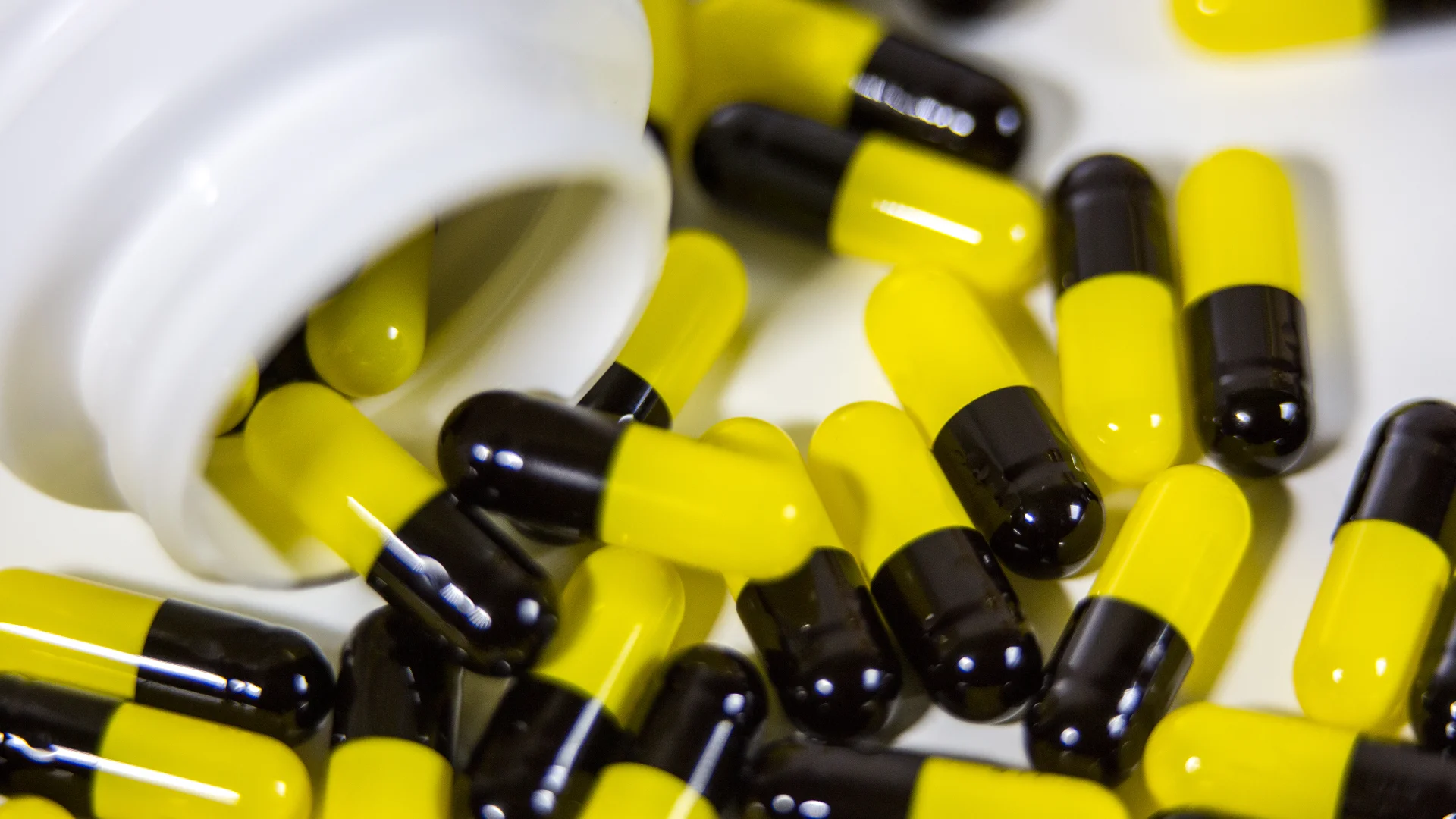Darvocet And Darvon Addiction Treatment in Long Island
Our Long Island Darvocet & Darvon guide explains why these drugs were banned, their risks and withdrawal, how dependence can shift to other opioids, and the role of detox, medications, therapies, harm reduction, and aftercare in building lasting recovery with confidential referral support.
Covered by most insurance plans
Available to help you 24/7
Table of Contents
Although Darvocet and Darvon were removed from the U.S. market in 2010 because of heart rhythm risks, people can still encounter these propoxyphene products through leftover supplies and illicit channels. On Long Island, the bigger danger today is that many who started with Darvocet or Darvon transition to other opioids to avoid withdrawal, which can quickly lead to stronger dependence and overdose risk. Long Island Addiction Resources is a confidential referral service that helps Nassau and Suffolk residents compare nearby licensed programs that match their needs and insurance. We are not a rehab or medical provider.

What Were Darvocet and Darvon
Darvocet and Darvon were pain medicines that contained propoxyphene. Darvocet also included acetaminophen. Propoxyphene is a synthetic opioid analgesic, and repeated exposure can cause tolerance, physical dependence, and addiction. The FDA requested market withdrawal in 2010 after data showed an increased risk of serious cardiac toxicity, including arrhythmias, even at therapeutic doses. Despite the ban, pills still surface through old medicine cabinets or illegal markets, and some are counterfeits that may contain fentanyl or other unknown substances.
How Dependence Develops and Why It Persists
Opioids activate brain reward pathways and dampen pain signals. With repeated use, the nervous system adapts, which reduces the medication’s effect and drives dose escalation. Physical dependence follows, meaning the body produces withdrawal symptoms when the drug level drops. After the FDA ban, many people who were dependent on propoxyphene substituted other opioids such as hydrocodone, oxycodone, codeine, tramadol, or even heroin to stave off withdrawal. This substitution can entrench the problem and raises overdose risk, especially when street products are adulterated.
Specific Health Risks With Propoxyphene and Combination Products
Cardiac toxicity. Propoxyphene is associated with QT prolongation and potentially lethal ventricular arrhythmias. People with underlying heart disease, electrolyte abnormalities, or those taking interacting medicines are at higher risk.
Liver injury. Combination products that include acetaminophen can cause acute liver failure when taken in high doses or when combined with alcohol. Many overdoses involve unrecognized cumulative acetaminophen intake from multiple products.
Respiratory depression and overdose. Like other opioids, high doses slow breathing and can stop it entirely. The danger multiplies when mixed with alcohol, benzodiazepines, or other sedatives.
Counterfeit pills. Tablets sold as Darvocet or Darvon today are often fake. Counterfeits may contain fentanyl in unpredictable amounts, which greatly increases fatal overdose risk after even a single pill.

Recognizing Problem Use
- Escalating doses or taking pills more often than prescribed to chase the same effect
- Doctor shopping, hiding use, or buying pills from friends or the street
- Daytime drowsiness, slowed breathing, pinpoint pupils, or slurred speech
- Constipation, nausea, and repeated flu like symptoms between doses
- Money problems, missed work or school, conflicts at home, or legal issues
What Withdrawal Feels Like
Early symptoms can start within 8 to 24 hours after the last dose and include anxiety, restlessness, sweating, runny eyes and nose, yawning, and a rising sense of panic. As withdrawal peaks, people often report muscle and bone aches, abdominal cramps, nausea, vomiting, diarrhea, gooseflesh, chills, and severe insomnia. These symptoms are rarely life threatening on their own but they are extremely uncomfortable and a common trigger for returning to use. If other sedatives or alcohol are involved, additional withdrawal syndromes may complicate the picture and require medical care.
Detox and Stabilization on Long Island
Detox is the process of helping your body clear opioids while managing symptoms and medical risks. On Long Island, this can be done in several settings depending on severity and supports at home. Inpatient detox provides 24 hour monitoring for people with complex medical issues, polysubstance use, or unsafe living situations. Intensive outpatient detox may be appropriate when health is stable and a sober support system is available. Care starts with a full assessment of medical history, current medicines, substance use patterns, mental health, and cardiac risk given propoxyphene’s arrhythmia potential.
Medications That Reduce Withdrawal and Overdose Risk
Buprenorphine. A partial opioid agonist that relieves withdrawal and cravings without producing the same level of euphoria. It has a ceiling effect that lowers overdose risk. Induction typically begins once moderate withdrawal is present.
Methadone. A full opioid agonist used in structured programs for people who benefit from daily observed dosing and close medical oversight. It suppresses withdrawal and stabilizes the nervous system while a recovery plan takes shape.
Naltrexone. An opioid blocker used after detox for relapse prevention. It reduces the rewarding effects if opioids are used. People must be fully detoxed before starting to avoid precipitated withdrawal.
Adjunctive support. Non opioid medicines can target nausea, diarrhea, cramps, insomnia, and anxiety. Hydration, nutrition, and sleep routines are built in from day one.
Therapies That Build Lasting Recovery
Cognitive Behavioral Therapy. Helps you map triggers, challenge high risk thinking, and practice skills to ride out cravings. You leave with a written plan that lists early warning signs and specific coping steps.
Dialectical Behavior Therapy skills. Teaches emotion regulation and distress tolerance for the intense waves that often lead back to use. Skills are rehearsed in session and applied between visits.
Motivational interviewing. Supports change without pressure by drawing out your own reasons to quit and aligning treatment with your values, relationships, and goals.
Family therapy and peer support. Improves communication and boundaries at home and reduces isolation through mutual aid groups and recovery coaching.

Levels of Care Available Near You
- Medical detox. Short term stabilization with symptom relief and a transition plan to ongoing care.
- Residential or inpatient rehab. Twenty four hour structure for people who need distance from triggers and intensive daily therapy.
- Partial Hospitalization and Intensive Outpatient. Multiple therapy days per week with medication management, skills practice, and relapse prevention while living at home or in recovery housing.
- Standard outpatient care. Weekly therapy and medication follow up once symptoms and routines are stabilized.
Harm Reduction and Safety While You Get Help
- Carry naloxone and make sure family knows how to use it. Avoid using alone.
- Do not mix opioids with alcohol or sedatives. This combination is a major driver of fatal overdose.
- Be wary of any pill sold as Darvocet or Darvon. Counterfeits may contain fentanyl in unpredictable amounts.
- Schedule medical follow up for cardiac evaluation if you have used propoxyphene products, especially if you notice palpitations, fainting, or chest discomfort.
Aftercare and Relapse Prevention
Recovery continues after detox or rehab ends. Effective aftercare includes regular medication management when indicated, ongoing therapy, peer groups, recovery friendly routines for sleep, meals, exercise, and stress, and a plan for high risk times. Your plan should also identify people you can call, urgent care options, and steps to take if a lapse occurs so a slip does not become a full relapse.
How We Help on Long Island
We listen to your story, verify insurance, and connect you with licensed detox, residential, partial hospitalization, intensive outpatient, standard outpatient, and recovery housing options across Nassau and Suffolk. We are a connector and guide focused on person centered, evidence based care that fits your goals, schedule, and budget.
Start Darvocet and Darvon Addiction Treatment on Long Island Today
If you or a loved one are ready to end your alcohol and drug use, there are many recovery options available near you in Long Island
Are you ready to take back control over your life?
Making the decision to seek help is one of the hardest and bravest steps you can take. We know that the recovery process is not always easy—there may be challenges along the way—but every step forward brings you closer to a life free from the weight of addiction.
Find treatment options covered by insurance















Let today be
your Day 1
We'll get on a call, assess your health history, and verify your insurance. Today is Day 1. We can't wait to celebrate Day 1000 with you!
Fill out this simple form and we’ll call you right back.
Frequently Asked Questions
We'll get on a call, assess your health history, and verify your insurance. Today is Day 1. We can't wait to celebrate Day 1000 with you!
What are Darvocet and Darvon?
Darvocet and Darvon were prescription pain medications containing propoxyphene, a synthetic opioid once used to treat mild to moderate pain.
What makes propoxyphene and related drugs dangerous?
These drugs can cause irregular heart rhythms (arrhythmias), liver injury, and respiratory depression. Illicit versions may also contain fentanyl, which is extremely potent and deadly in small doses.
What are the symptoms of Darvocet or propoxyphene withdrawal?
Withdrawal can begin 8–24 hours after the last dose and may include anxiety, sweating, nausea, vomiting, diarrhea, muscle aches, and insomnia.
What medications help treat opioid withdrawal from Darvocet or similar drugs?
Medications like buprenorphine, methadone, or clonidine may be prescribed to manage withdrawal symptoms and stabilize recovery.
What levels of care are available for Darvocet addiction treatment?
Treatment options on Long Island include inpatient rehab, partial hospitalization (PHP), intensive outpatient programs (IOP), and outpatient counseling, depending on individual needs.
